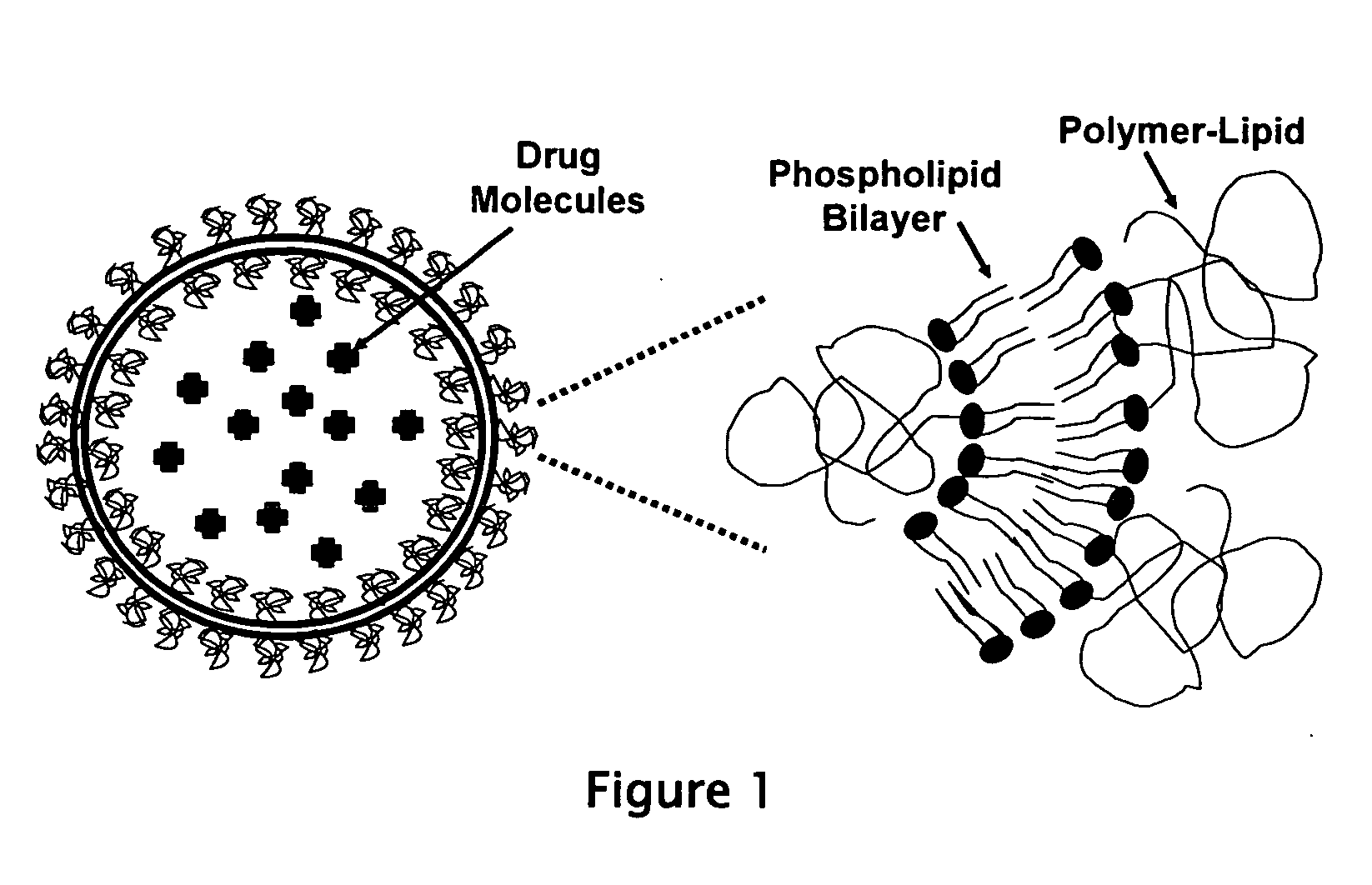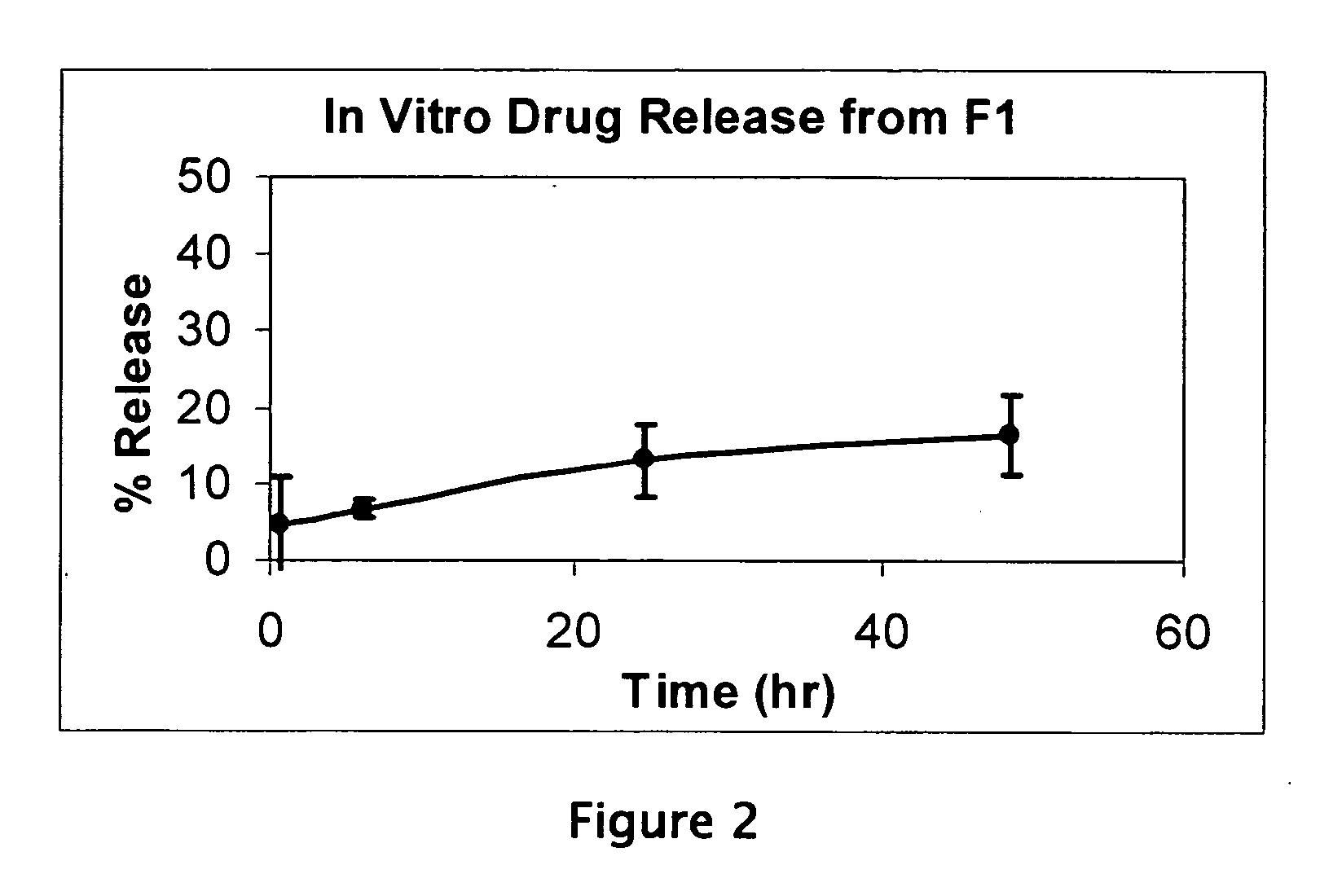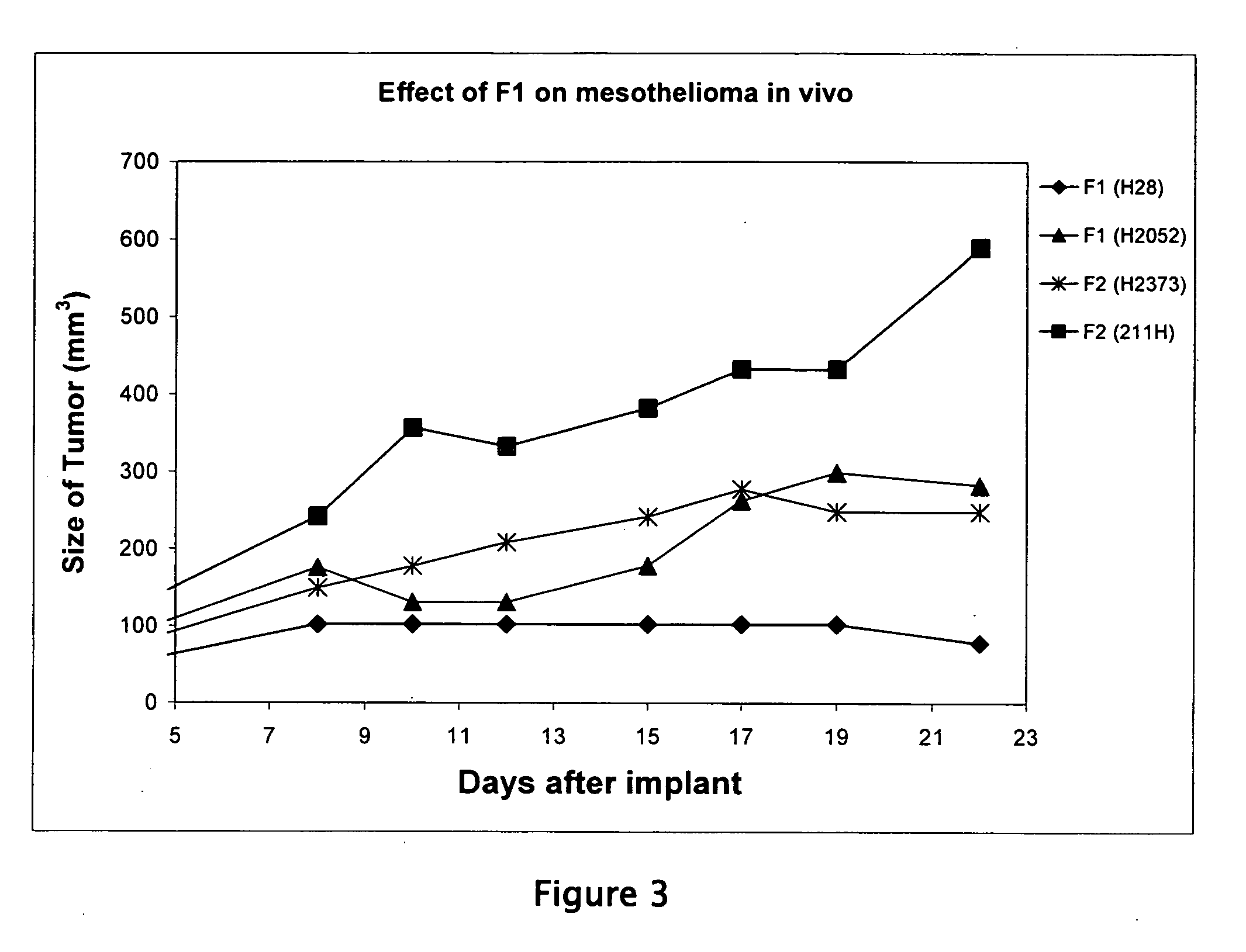Liposome compositions for the delivery of macromolecules
a macromolecule and composition technology, applied in the direction of liposome delivery, pharmaceutical delivery mechanism, medical preparations, etc., can solve the problems of poor past efficacy of sterically stabilized liposomes containing water soluble macromolecules, and achieve the effect of improving the efficacy of delivery
- Summary
- Abstract
- Description
- Claims
- Application Information
AI Technical Summary
Benefits of technology
Problems solved by technology
Method used
Image
Examples
example 1
Liposome Formulation and Stability Testing
[0052] Liposome formulation F1 was constructed by weighing 83.2 mg of DPPC and 16.75 mg of PEG2000-DSPE (equivalent to 5 mole %) into a 10 ml glass vial. 100 microliters of ethanol were added and the mixture was heated to 50 degrees C. to dissolve the lipids. The solution was then cast into a film on the interior of the glass vial, and the residual ethanol was removed under vacuum overnight at 20 degrees C. The lipid film was then hydrated with 1 ml of a 5 mg / ml phosphothioate oligonucletide solution (21 bases) in DNAse-free isotonic saline. The mixture was heated to 60 degrees C. with mild vortexing for 1 hour to completely suspend the lipid film. A milky white lipid suspension results, with large heterogeneous multilamellar vesicles being formed. Then the mixture was alternately frozen and thawed 16 times by alternating the vial between a liquid nitrogen bath and a water bath at 50 degrees C., with gentle stirring. This produces a more fl...
example 2
Preliminary in Vivo Efficacy Test
[0056] The model macromolecular drug selected for in vivo testing was a proprietary VEGF antisense oligonucleotide referred to as “VAS”. By suppressing cellular expression of VEGF, VAS suppresses the biological signals that are integral to most angiogenic disease processes as well as autocrine / paracrine growth of certain tumors cells. VAS is proven to be effective at suppressing VEGF expression in animals, but suffers from a very short (30 min) plasma half-life in vivo, requiring extended daily intravenous infusions for optimal efficacy. Furthermore, plasma clearance is primarily via the kidneys, leading to renal toxicity as the dose limiting toxicity. Our liposome formulation possesses the potential to greatly improve pharmacokinetics and tissue targeting, and reduce toxic exposure to vital organs, for oligonucleotides and other macromolecular drugs which are rapidly metabolized or cleared from the blood.
[0057] Human mesothelioma is an ideal model...
example 3
In vivo Testing of Liposome Library
[0064] In order to more clearly assess the novelty and efficacy of the invention, the library of liposomal VAS compositions (Table 1) was compared in the human mesothelioma tumor xenograft model. Approximately 5 million mesothelioma tumor cells were injected subcutaneously into each nude mouse on day zero. Five mice were used in each group to assure good statistical significance of results. Starting on day one, liposomal formulas were given once per week via rapid tail vein bolus injection of approx 10 mg / kg. F1 was also given to a separate group as two injections per week (F1-2, whereas F1-1 is F1 given once weekly). As a control, one group was treated with naked oligonucleotide in saline, and an untreated group was maintained as a further control. The number of mice in each treatment group was five. After 21 days of treatment, the mice were sacrificed.
[0065] The resulting tumor growth curves in FIG. 5 show a dramatic result. The Invention, F1-1...
PUM
 Login to View More
Login to View More Abstract
Description
Claims
Application Information
 Login to View More
Login to View More - R&D
- Intellectual Property
- Life Sciences
- Materials
- Tech Scout
- Unparalleled Data Quality
- Higher Quality Content
- 60% Fewer Hallucinations
Browse by: Latest US Patents, China's latest patents, Technical Efficacy Thesaurus, Application Domain, Technology Topic, Popular Technical Reports.
© 2025 PatSnap. All rights reserved.Legal|Privacy policy|Modern Slavery Act Transparency Statement|Sitemap|About US| Contact US: help@patsnap.com



